Department of Analytical Chemistry, Laboratory 3124
Laboratory of applied chemometrics
Team
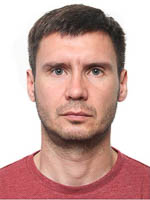 |
Head of the laboratory Kirsanov DmitryDSc, professor ORCID 0000-0002-5667-6910 ResearcherID J-7508-2012 |
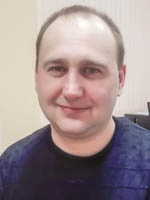 |
Panchuk VitalyPhD in physics and mathematics, associate Professor ORCID 0000-0001-6169-2694 ResearcherID J-6050-2013 |
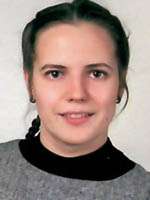 |
Khaydukova MariaPhD in chemistry, assistant ORCID 0000-0003-0202-6338 Research ID L-7783-2013 |
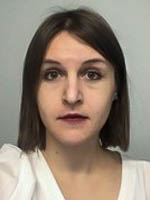 |
Ashina JuliaPhD, assistant ORCiD 0000-0002-3080-4574 ResearcherID AAF-2910-2019. |
 |
Boichenko EkaterinaEngineer-research ORCID 0000-0002-7809-5033 |
 |
Vladimirova NadezhdaPhD student |
 |
Iuskina EkaterinaBachelor student |
 |
Rukosuev KirillBachelor student |
 |
Saveliev MikhailBachelor student |
International collaborations
- University of Rome “Tor Vergata” (Italy)
- University of Applied Sciences OWL(Germany)
- University of Aveiro (Portugal)
- University Lille 1 (France)
- Hangzhou University (China)
- Jadavpur University (India)
- Art photonics GMbH (Germany)
- Catholic University of Leuven (Belgium)
Scientific Research
Main research areas
- Application of machine learning in chemistry (chemometrics)
- Spectroscopic, chromatographic and sensor data processing
- Electrochemical and optical multisensor systems
- Analytical applications for real world problems
Examples of the research projects
- Prostate cancer diagnostics based on potentiometric multisensor analysis
- Optical and electrochemical multisensor systems for monitoring of the key components in liquid media during spent nuclear fuel reprocessing
- Intraoperative determination of the tumor margins with NIR optical fiber
- Water quality online control at water treatment plants with electrochemical sensors
Current funding
- RSF 20-79-00294. Fabrication technology of automated 3D-printed multisensory systems for chemical analysis
- RSF 18-19-00151. Development of chemical on-line control system for spent nuclear fuel (SNF) reprocessing base on optical spectroscopy, electrochemical sensors and machine learning methods
- RFBR 18-53-53016. Novel sensors and methodologies of application of multisensor systems for medical purposes
Publications
Selected publications (2020)
Non-invasive prostate cancer screening using chemometric processing of macro and trace element concentration profiles in urine
Ekaterina Martynko, Ekaterina Oleneva, Evgeny Andreev, Sergey Savinov, Svetlana Solovieva, Vladimir Protoshchak, Evgenii Karpushchenko, Aleksandr Sleptsov, Vitaly Panchuk, Andrey Legin, Dmitry Kirsanov

We report on the attempt to develop a simple non-invasive screening protocol for prostate cancer (PCa). Absolute concentrations of 19 macro and trace elements (Ag, Al, B, Ba, Ca, Cd, Cu, Fe, K, Mg, Mn, Na, P, Pb, S, Si, Sr, Tl, Zn) were determined using inductively coupled plasma optical emission spectroscopy (ICP-OES) and atomic absorption spectroscopy (AAS) techniques in 34 urine samples from patients with biopsy-confirmed PCa and 32 urine samples from controls. All the possible concentration ratios were calculated as well. Various data pro-cessing methods, including Principal Component Analysis, Logistic Regression, and Decision Trees, were applied for data modeling to study if the elemental concentration profile may contribute to the development of new screening tools for prostate cancer. Several statistically significant differences between the two groups were observed both in the individual element concentrations and in their ratios. The mathematical classification models built for the prediction of the patient's status with respect to PCa based on elemental profile have shown the accuracy of up to 89%, thus exceeding the accuracy of the standard prostate-specific antigen testing.
Microchemical Journal 159 (2020)105464. doi.org/10.1016/j.microc.2020.105464
Analytical Figures of Merit for Multisensor Arrays
Hadi Parastar, Dmitry Kirsanov
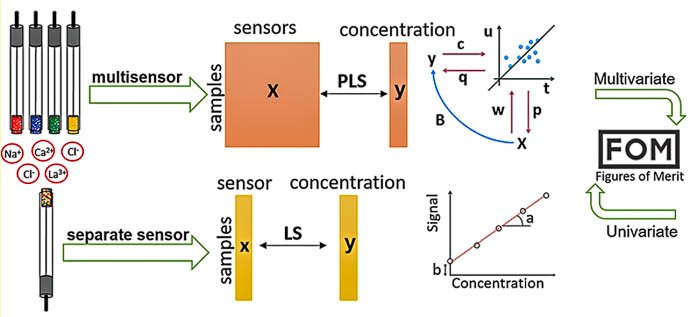
Multisensor arrays employing various sensing principles are a rapidly developing field of research as they allow simple and inexpensive quantification of various parameters in complex samples. Quantitative analysis with such systems is based on multivariate regression techniques, and deriving of traditional analytical figures of merit (e.g., sensitivity, selectivity, limit of detection, and limit of quantitation) for such systems is not obvious and straightforward. Nevertheless, it is absolutely needed for further development of the multisensor research field and for introducing these instruments into the general context of analytical chemistry. Here, we report on the protocol for calculation of sensitivity, selectivity, and detection limits for multisensor arrays. The results are provided and discussed in detail for several real world data sets.
ACS Sensors 5 (2020) 580-587. dx.doi.org/10.1021/acssensors.9b02531
Quantification of thorium and uranium in real process streams of Mayak radiochemical plant using potentiometric multisensor array
Marina Agafonova-Moroz, Julia Savosina, Yuri Voroshilov, Sergey Lukin, Aleksander Lumpov, Vasily Babain, Andrey Legin, Dmitry Kirsanov
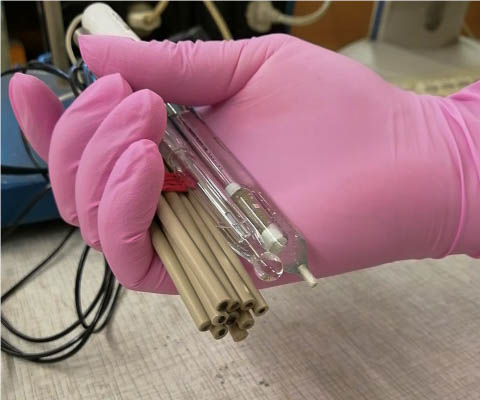
The task of real time chemical composition control of radiochemical process streams is a great challenge to analytical chemistry due to very complex composition of the media and high radioactivity. Most of the analytical methods employed at the moment assume tedious and time-consuming steps of sampling, sample pretreatment and sophisticated analysis. In this study we have developed potentiometric multisensor system which is capable of fast and simple direct quantification of U and Th in real process streams of radiochemical plant with relative errors around 10%. This appears to be a reasonable precision sufficient for technological monitoring purposes and gives a good promise for the development of novel approach to radiochemical analytics.
Journal of Radioanalytical and Nuclear Chemistry 323 (2020) 605-612. doi.org/10.1007/s10967-019-06941-8
QSPR Modeling of Potentiometric Mg2+/Ca2+ Selectivity for PVC-plasticized Sensor Membranes
Ekaterina Martynko, Vitaly Solov'ev, Aleksandre Varnek, Andrey Legin, Dmitry Kirsanov
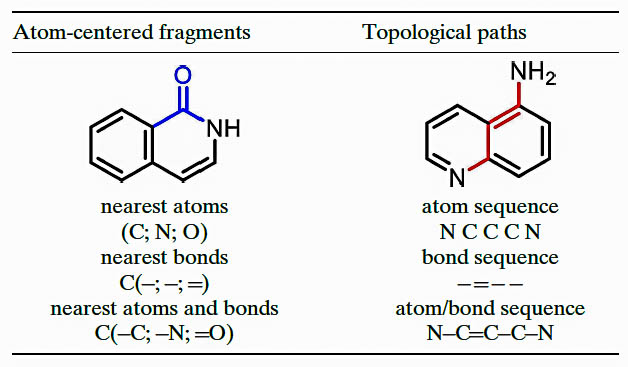
The development of novel ionophores for ionselective sensors is a time-consuming and tedious process requiring synthesis of candidate substances, preparation of plasticized polymeric membranes, and their thorough characterization with traditional protocols to assess sensitivity, selectivity and detection limits for target ions. The vast amount of literature data accumulated on various ion-selective sensors allows for significant facilitation of the development through in silico experiments. In this report, we performed the feasibility study on the prediction of potentiometric Mg2+/Ca2+ selectivity for various amide ligands using quantitative structure-property relationship (QSPR) modeling. The approach proved to be promising for ionophore screening purposes with achieved precision in prediction of the selectivity coefficient logK(Mg2+/Ca2+) of 0.5 in the range from -1.7 to +2.3. The study also shows a route for prediction of new potential ionophores with high selectivity values.
Electroanalysis 32 (2020) 792-798. doi.org/10.1002/elan.201900648
2020
- Martynko, E., Oleneva, E., Andreev, E., Savinov, S., Solovieva, S., Protoshchak, V., Karpushchenko, E., Sleptsov, A., Panchuk, V., Legin, A., Kirsanov, D. Non-invasive prostate cancer screening using chemometric processing of macro and trace element concentration profiles in urine (2020) Microchemical Journal, 159, paper # 105464. DOI: 10.1016/j.microc.2020.105464
- Deev, V., Solovieva, S., Andreev, E., Protoshchak, V., Karpushchenko, E., Sleptsov, A., Kartsova, L., Bessonova, E., Legin, A., Kirsanov, D. Prostate cancer screening using chemometric processing of GC–MS profiles obtained in the headspace above urine samples (2020) Journal of Chromatography B: Analytical Technologies in the Biomedical and Life Sciences, 1155, paper # 122298. DOI: 10.1016/j.jchromb.2020.122298
- Belugina, R.B., Monakhova, Y.B., Rubtsova, E., Becht, A., Schollmayer, C., Holzgrabe, U., Legin, A.V., Kirsanov, D.O. Distinguishing paracetamol formulations: Comparison of potentiometric “Electronic Tongue” with established analytical techniques (2020) Journal of Pharmaceutical and Biomedical Analysis, 188, paper # 113457. DOI: 10.1016/j.jpba.2020.113457
- Gitlina, A.Y., Surkova, A., Ivonina, M.V., Sizov, V.V., Petrovskii, S.K., Legin, A., Starova, G.L., Koshevoy, I.O., Grachova, E.V., Kirsanov, D.O. Cyclometalated Ir(III) complexes as tuneable multiband light sources for optical multisensor systems: Feasibility study (2020) Dyes and Pigments, 180, paper # 108428. DOI: 10.1016/j.dyepig.2020.108428
- Surkova, A., Bogomolov, A., Legin, A., Kirsanov, D. Calibration Transfer for LED-Based Optical Multisensor Systems (2020) ACS sensors, 5 (8), pp. 2587-2595. DOI: 10.1021/acssensors.0c01018
- Martynko, E., Kirsanov, D. Application of Chemometrics in Biosensing: A Brief Review (2020) Biosensors, 10 (8), paper # 100. DOI: 10.3390/bios10080100
- Yaroshenko, I., Kirsanov, D., Marjanovic, M., Lieberzeit, P.A., Korostynska, O., Mason, A., Frau, I., Legin, A. Real-time water quality monitoring with chemical sensors (2020) Sensors (Switzerland), 20 (12), paper # 3432, pp. 1-22. DOI: 10.3390/s20123432
- Kondratyeva, Y.O., Tolstopjatova, E.G., Kirsanov, D.O., Mikhelson, K.N. Chronoamperometric and coulometric analysis with ionophore-based ion-selective electrodes: A modified theory and the potassium ion assay in serum samples (2020) Sensors and Actuators, B: Chemical, 310, paper # 127894. DOI: 10.1016/j.snb.2020.127894
- Oleneva, E., Kuchmenko, T., Drozdova, E., Legin, A., Kirsanov, D. Identification of plastic toys contaminated with volatile organic compounds using QCM gas sensor array (2020) Talanta, 211, paper # 120701. DOI: 10.1016/j.talanta.2019.120701
- Martynko, E., Solov'ev, V., Varnek, A., Legin, A., Kirsanov, D. QSPR Modeling of Potentiometric Mg2+/Ca2+ Selectivity for PVC-plasticized Sensor Membranes (2020) Electroanalysis, 32 (4), pp. 792-798. DOI: 10.1002/elan.201900648
- Debus, B., Panchuk, V., Gusev, B., Savinov, S., Popkov, V., Legin, A., Semenov, V., Kirsanov, D. On the potential and limitations of multivariate curve resolution in Mӧssbauer spectroscopic studies (2020) Chemometrics and Intelligent Laboratory Systems, 198, paper # 103941. DOI: 10.1016/j.chemolab.2020.103941
- Aidene, S., Semenov, V., Kirsanov, D., Kirsanov, D., Panchuk, V. Assessment of the physical properties, and the hydrogen, carbon, and oxygen content in plastics using energy-dispersive X-ray fluorescence spectrometry (2020) Spectrochimica Acta - Part B Atomic Spectroscopy, 165, paper # 105771. DOI: 10.1016/j.sab.2020.105771
- Savosina, J., Agafonova-Moroz, M., Yaroshenko, I., Ashina, J., Babain, V., Lumpov, A., Legin, A., Kirsanov, D. Plutonium (IV) quantification in technologically relevant media using potentiometric sensor array (2020) Sensors (Switzerland), 20 (6), paper # 1604. DOI: 10.3390/s20061604
- Parastar, H., Kirsanov, D. Analytical Figures of Merit for Multisensor Arrays (2020) ACS Sensors, 5 (2), pp. 580-587. DOI: 10.1021/acssensors.9b02531
- Kong, L., Gan, Y., Liang, T., Zhong, L., Pan, Y., Kirsanov, D., Legin, A., Wan, H., Wang, P. A novel smartphone-based CD-spectrometer for high sensitive and cost-effective colorimetric detection of ascorbic acid (2020) Analytica Chimica Acta, 1093, pp. 150-159. DOI: 10.1016/j.aca.2019.09.071
- Agafonova-Moroz, M., Savosina, J., Voroshilov, Y., Lukin, S., Lumpov, A., Babain, V., Oleneva, E., Legin, A., Kirsanov, D. Quantification of thorium and uranium in real process streams of Mayak radiochemical plant using potentiometric multisensor array (2020) Journal of Radioanalytical and Nuclear Chemistry, 323 (1), pp. 605-612. DOI: 10.1007/s10967-019-06941-8
2019
- Soloviev, V., Varnek, A., Babain, V., Polukeev, V., Ashina, J., Legin, E., Legin, A., Kirsanov, D. QSPR modeling of potentiometric sensitivity towards heavy metal ions for polymeric membrane sensors (2019) Sensors and Actuators, B: Chemical, 301, paper # 126941. DOI: 10.1016/j.snb.2019.126941
- Legin, A., Kirsanov, D., del Valle, M. Avoiding nonsense in electronic taste sensing (2019) TrAC - Trends in Analytical Chemistry, 121, paper # 115675. DOI: 10.1016/j.trac.2019.115675
- Kirsanov, D., Correa, D.S., Gaal, G., Riul, A., Jr., Braunger, M.L., Shimizu, F.M., Oliveira, O.N., Jr., Liang, T., Wan, H., Wang, P., Oleneva, E., Legin, A. Electronic tongues for inedible media (2019) Sensors (Switzerland), 19 (23), paper # 5113. DOI: 10.3390/s19235113
- Panchuk, V., Semenov, V., Ashina, J., Legin, A., Mikhelson, K., Kirsanov, D. Feasibility study of MÖssbauer spectroscopy as a tool to explore PVC-plasticized potentiometric sensor membranes (2019) Sensors and Actuators, B: Chemical, 298, paper # 126880. DOI: 10.1016/j.snb.2019.126880
- Yaroshenko, I.S., Alyapyshev, M.Y., Babain, V.A., Legin, A.V., Kirsanov, D.O. Potentiometric Sensors and Multisensor Systems for the Determination of Lanthanides (2019) Journal of Analytical Chemistry, 74 (10), pp. 1003-1018. DOI: 10.1134/S1061934819100113
- Grigoriev, G.Y., Lagutin, A.S., Nabiev, S.S., Zuev, B.K., Filonenko, V.A., Legin, A.V., Kirsanov, D.O. Water quality monitoring during interplanetary space flights (2019) Acta Astronautica, 163, pp. 126-132. DOI: 10.1016/j.actaastro.2019.03.071
- Surkova, A., Belikova, V., Kirsanov, D., Legin, A., Bogomolov, A. Towards an optical multisensor system for dairy: Global calibration for fat analysis in homogenized milk (2019) Microchemical Journal, 149, paper # 104012. DOI: 10.1016/j.microc.2019.104012
- Solovieva, S., Karnaukh, M., Panchuk, V., Andreev, E., Kartsova, L., Bessonova, E., Legin, A., Wang, P., Wan, H., Jahatspanian, I., Kirsanov, D. Potentiometric multisensor system as a possible simple tool for non-invasive prostate cancer diagnostics through urine analysis (2019) Sensors and Actuators, B: Chemical, 289, pp. 42-47. DOI: 10.1016/j.snb.2019.03.072
- Oleneva, E., Savosina, J., Agafonova-Moroz, M., Lumpov, A., Babain, V., Jahatspanian, I., Legin, A., Kirsanov, D. Potentiometric multisensor system for tetra- and hexavalent actinide quantification in complex rare earth metal mixtures related to spent nuclear fuel reprocessing (2019) Sensors and Actuators, B: Chemical, 288, pp. 155-162. DOI: 10.1016/j.snb.2019.02.113
- Legin, E., Zadorozhnaya, O., Khaydukova, M., Kirsanov, D., Rybakin, V., Zagrebin, A., Ignatyeva, N., Ashina, J., Sarkar, S., Mukherjee, S., Bhattacharyya, N., Bandyopadhyay, R., Legin, A. Rapid evaluation of integral quality and safety of surface and waste waters by a multisensor system (electronic tongue) (2019) Sensors (Switzerland), 19 (9), paper # 2019. DOI: 10.3390/s19092019
- Oleneva, E., Panchenko, A., Khaydukova, M., Gubareva, E., Bibikova, O., Artyushenko, V., Legin, A., Kirsanov, D. In vivo and in vitro application of near-infrared fiber optic probe for Ehrlich carcinoma distinction: Towards the development of real-time tumor margins assessment tool (2019) Spectrochimica Acta - Part A: Molecular and Biomolecular Spectroscopy, 213, pp. 12-18. DOI: 10.1016/j.saa.2019.01.061
- Gan, Y., Hu, N., He, C., Zhou, S., Tu, J., Liang, T., Pan, Y., Kirsanov, D., Legin, A., Wan, H., Wang, P. MnO 2 nanosheets as the biomimetic oxidase for rapid and sensitive oxalate detection combining with bionic E-eye (2019) Biosensors and Bioelectronics, 130, pp. 254-261. DOI: 10.1016/j.bios.2019.01.026
- Oleneva, E., Khaydukova, M., Ashina, J., Yaroshenko, I., Jahatspanian, I., Legin, A., Kirsanov, D. A simple procedure to assess limit of detection for multisensor systems (2019) Sensors (Switzerland), 19 (6), paper # 1359. DOI: 10.3390/s19061359
- Belikova, V., Panchuk, V., Legin, E., Melenteva, A., Kirsanov, D., Legin, A. Continuous monitoring of water quality at aeration plant with potentiometric sensor array (2019) Sensors and Actuators, B: Chemical, 282, pp. 854-860. DOI: 10.1016/j.snb.2018.11.153
- Panchuk, V., Semenov, V., Lvova, L., Legin, A., Kirsanov, D. Response Standardization for Drift Correction and Multivariate Calibration Transfer in “Electronic Tongue” Studies (2019) Methods in Molecular Biology, 2027, pp. 181-194. DOI: 10.1007/978-1-4939-9616-2_15
- Semenov, V., Volkov, S., Khaydukova, M., Fedorov, A., Lisitsyna, I., Kirsanov, D., Legin, A. Determination of three quality parameters in vegetable oils using potentiometric e-tongue (2019) Journal of Food Composition and Analysis, 75, pp. 75-80. DOI: 10.1016/j.jfca.2018.09.015
2018
- Lvova, L., Yaroshenko, I., Kirsanov, D., Di Natale, C., Paolesse, R., Legin, A. Electronic tongue for brand uniformity control: A case study of apulian red wines recognition and defects evaluation (2018) Sensors (Switzerland), 18 (8), paper # 2584.
- Timofeeva, I., Kanashina, D., Kirsanov, D., Bulatov, A. A heating-assisted liquid-liquid microextraction approach using menthol: Separation of benzoic acid in juice samples followed by HPLC-UV determination (2018) Journal of Molecular Liquids, 261, pp. 265-270.
- Shafigullina, Z.R., Velikanova, L.I., Vorokhobina, N.V., Shustov, S.B., Lisitsin, A.A., Malevanaia, E.V., Buinova, M.O., Bessonova, E.A., Kirsanov, D.O. Urinary steroid profiling by gas chromatography mass spectrometry: Early features of malignancy in patients with adrenal incidentalomas (2018) Steroids, 135, pp. 31-35.
- Panchuk, V., Semenov, V., Legin, A., Kirsanov, D. Signal Smoothing with PLS Regression (2018) Analytical Chemistry, 90 (9), pp. 5959-5964.
- Panchuk, V., Yaroshenko, I., Legin, A., Semenov, V., Kirsanov, D. Application of chemometric methods to XRF-data – A tutorial review (2018) Analytica Chimica Acta, 1040, pp. 19-32.
- Lvova, L., Gonçalves, C.G., Di Natale, C., Legin, A., Kirsanov, D., Paolesse, R. Recent advances in magnesium assessment: From single selective sensors to multisensory approach (2018) Talanta, 179, pp. 430-441.
- Voitechovič, E., Korepanov, A., Kirsanov, D., Legin, A. Quantification of immobilized protein in pharmaceutical production by bio-assisted potentiometric multisensor system (2018) Journal of Pharmaceutical and Biomedical Analysis, 150, pp. 67-71.
Information for students
Bachelor, master and PhD students are welcome to work on their term papers and graduation theses. The particular topic will depend on the ongoing research projects of the lab. There is an option to choose between experimental work (hardware) and data processing work (software).